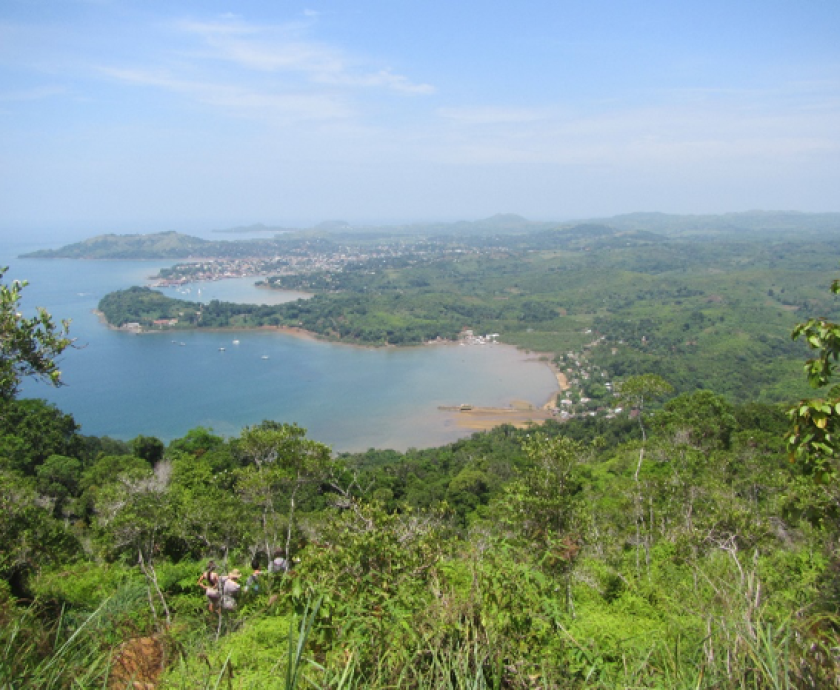At Madagascar Research and Conservation Institute (MRCI), our marine conservation team is diving deep, literally, into coral restoration. One of the most innovative and impactful ways we’re helping to protect Madagascar’s marine ecosystems is by building and deploying artificial reef (AR) structures that serve as new homes for corals and marine life. But how exactly do we build a reef from scratch? Let’s dive into the process.


From Rebar to Reef: Building the Structure
The construction of our artificial reefs starts on land using simple yet effective materials: concrete, rebar, mesh, cloth, and zip ties. Rebar, a strong steel bar, forms the skeleton of the reef. The thicker the rebar, the more stable the final structure will be, essential for surviving Madagascar’s powerful cyclones and tidal changes.
We bend the rebar into our desired shape, usually a dome, though we’ve recently gotten creative with pirate ships and even a castle, and cut it into sections. Then we wrap it in cloth soaked in concrete to give the reef its solid surface, ensuring no metal is left exposed. Mesh helps shape the concrete and binds the rebar corners together, giving the structure strength and cohesion.
Zip ties may seem like an unlikely tool for coral restoration, but they’re essential for attaching coral fragments securely once the AR is in the water.
Shapes with Purpose: Dome, Ship, and Castle Reefs
While dome-shaped ARs are our go-to for ease of construction and coral attachment, we’ve recently ventured into more imaginative designs. Our pirate ship reef even includes some bamboo elements and now hosts a pair of resident batfish who love the shelter it provides.
Shelter is key, not just for corals but for marine species like fish and rays that use the structures for protection. Variety in shape and size creates more ecological niches and helps support marine biodiversity. Our newest castle AR is ready for its coral inhabitants, offering yet another unique habitat on our reef.

Built to Last: Designing for Madagascar’s Ocean Conditions
Constructing an artificial reef can take 1 to 3 weeks, depending on complexity. But building in Madagascar requires an extra level of resilience. With cyclones, strong currents, and extreme tidal shifts, our ARs need to be large, well-weighted, and balanced, never too top-heavy, to withstand these dynamic conditions.
We now have around 16 artificial reefs deployed, each labelled for monitoring, and three coral nurseries that follow a regular cleaning and maintenance rotation.
Coral Restoration: A Delicate Dive
Once an AR is deployed, the real magic begins: coral restoration. Volunteers play a hands-on role in cleaning the structure of algae, collecting coral fragments, and attaching them securely.
Fragments are gathered from broken coral found nearby and small healthy sections from existing colonies. After trimming away any bleached or dead tissue, we aim to have healthy fragments around 10–15 cm long, spaced 10 cm apart to avoid competition and laid flat for maximum contact with the concrete. Zip ties secure each fragment, with the tie ends placed carefully away from the coral.
Over the next 2 to 6 weeks, the coral will begin to attach. During this critical period, the AR is cleaned frequently, and zip ties are tightened as needed. Once the coral is fully secured, we carefully cut the zip ties off.
A Reef with Variety: Why Coral Diversity Matters
While we mostly use branching corals, as they are fast-growing and easier to secure, it’s vital to include a mix of coral types. A diverse reef is a healthy reef, supporting a wider range of marine species and offering better resilience to environmental changes.
Join Us in Rebuilding the Reef
Our artificial reefs are more than underwater sculptures, they are living, breathing ecosystems. Through hands-on conservation efforts like these, MRCI is helping to restore vital coral habitats, support marine biodiversity, and provide long-term protection to Madagascar’s fragile reef systems.

If you’re inspired by this work and want to be part of something meaningful, consider joining our Marine Conservation Program as a volunteer. Your efforts could help shape the next pirate ship reef, or castle, and bring new life to the ocean floor.






